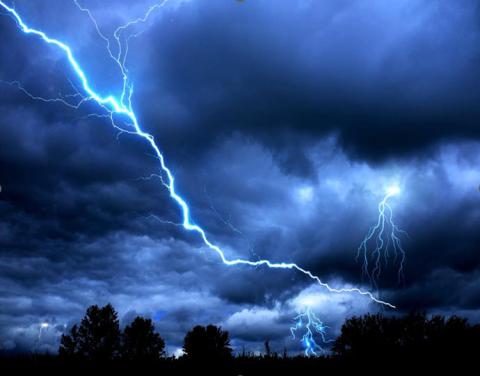
- Log in to post comments

When the sky turns an angry shade of gray and the wind starts to howl, there’s no time to start making a plan—you need to have one already in place. Severe storms are becoming more intense and unpredictable, leaving little room for hesitation. Whether it’s a fast-moving thunderstorm, a relentless hurricane, or a tornado dropping out of nowhere, you need to know that your home and family are ready to handle whatever comes. A little preparation can mean the difference between weathering the storm safely or scrambling in the dark, wishing you had done more.
Fortify Your Home’s Exterior Before the Storm Hits
Your house is your first line of defense, so it needs to be able to take a beating. Check your roof for loose shingles, because those can become airborne missiles in high winds. If you have large trees nearby, trim any overhanging branches that could come crashing down on your roof or through a window. Storm shutters or impact-resistant windows are a smart investment, especially in hurricane-prone areas, but if that’s not an option, pre-cut plywood is a solid backup. And don’t forget about your gutters—clogged ones can cause water damage faster than you’d expect.
Create an Emergency Kit That Covers All the Basics
When the power goes out and roads become impassable, you’ll be grateful for a well-stocked emergency kit. This isn’t just about flashlights and bottled water (though those are essentials). You need a battery-powered or hand-crank radio to stay informed, extra batteries for every device, and a first-aid kit that goes beyond basic bandages. Think about medications, pet food, baby formula—anything your household might need for at least three days. Cash is another often-overlooked necessity; ATMs and card readers won’t help you if the grid is down.
Make Sure Your Family Knows the Plan
A plan isn’t much use if no one remembers it in the chaos of a storm. Sit down with your family and go over what to do in different scenarios. Where do you take shelter in a tornado? What’s the safest room to be in during a hurricane? If you need to evacuate, what’s the meeting point? Kids should know how to contact relatives if you get separated, and everyone should have a list of emergency numbers in case cell service goes down. It’s one thing to have a plan written down somewhere—it’s another to make sure it’s second nature.
Secure the Things You Don’t Think About Until It’s Too Late
It’s easy to focus on big-ticket preparations, but the little things can be just as dangerous when storms roll in. Outdoor furniture, grills, and potted plants can turn into projectiles in high winds, so tie them down or bring them inside. If flooding is a concern, elevate important documents, electronics, and valuables to higher shelves. And if you rely on well water, fill up your bathtubs beforehand—you might need that water for flushing toilets if the pump goes out. The small details often make the biggest difference.
Digitize Important Documents
Before a storm hits, digitizing your important documents can save you from the headache of lost paperwork when you need it most. Birth certificates, insurance policies, medical records, and property deeds should all be scanned and stored securely in the cloud or on an external hard drive. Saving them as PDFs ensures they remain easily accessible and formatted correctly across any device. With a PDF creator, you can quickly convert any file—whether it’s a scanned image or a Word document—into a secure and shareable PDF. This is useful when you need quick access to critical documents without digging through damaged files or paperwork.
Have a Power Backup Plan That Works
Losing power is more than an inconvenience; in extreme cases, it can be a real threat. If you can afford a generator, get one, but know how to use it safely—carbon monoxide poisoning is a bigger risk than people realize. If a generator isn’t an option, consider portable power banks for your phones and rechargeable LED lanterns instead of candles. If you have a gas stove, learn how to manually light it. And don’t forget the fridge only keeps food safe for about four hours without power, so have a plan for non-perishable meals.
Understand When It’s Time to Leave
Some storms are survivable with good preparation. Others demand that you get out. Pay attention to evacuation orders, and don’t try to ride out something like a major hurricane if officials are urging you to leave. Have a go-bag packed with essentials, and know your evacuation routes in advance. If you have pets, make sure you have a plan for them too—many shelters won’t take animals. Waiting until the last minute to leave can put you in gridlock or leave you without fuel, so be proactive rather than reactive.
Don’t Forget About the Aftermath
The storm passing doesn’t mean you’re in the clear. Downed power lines, flooded roads, and structural damage can make the aftermath just as dangerous. Stay put until authorities say it’s safe to go outside, and don’t wade into floodwaters—you never know what’s in them. If your home was damaged, document everything for insurance purposes before you start cleaning up. And check in on neighbors, especially seniors or those with small children, because recovery is a lot easier when communities look out for each other.
Storms are unpredictable, but your response to them doesn’t have to be. With the right preparation, you can keep your home intact, your family safe, and your stress levels manageable. The key is planning ahead—because when the winds pick up and the rain starts falling sideways, you won’t have time to figure it out on the fly.
Join the Disaster Central Forum to connect with fellow disaster survivors and actively participate in shaping recovery efforts within your community!
By Emily Graham